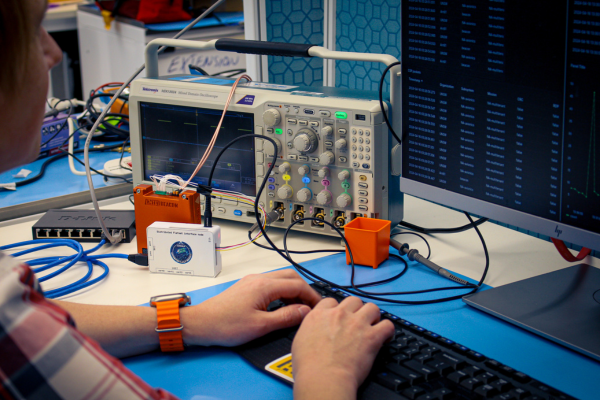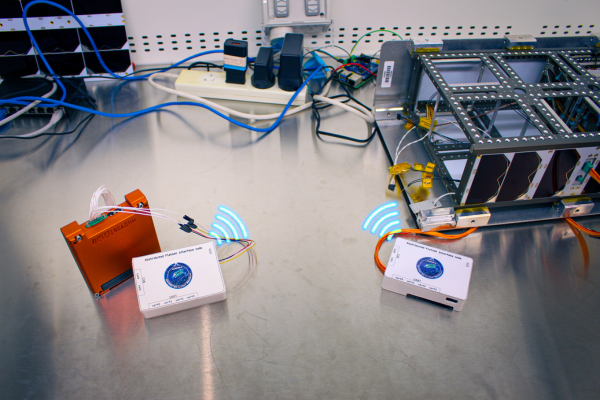A SmartSat CRC funded project is successfully helping Australian space start-ups get their technologies ready to go into space.
The Distributed FlatSat (DFS) concept was conceived within the SmartSat-funded Aurora Space Cluster as a means to more rapidly and cost-effectively raise the Technology Readiness Level (TRL) of spacecraft components.
The concept for the DFS is simple enough; use internet-based infrastructure to create near-seamless data connectivity between spacecraft components from anywhere around the world to support testing and integration.
The FlatSat is a crucial developmental stage in the majority of space missions involving new hardware components, however this can become a difficult and costly exercise when working with multiple stakeholders from various companies and locations.
 The DFS allows teams to work on components of a single FlatSat from their own cleanrooms
The DFS allows teams to work on components of a single FlatSat from their own cleanrooms
(image courtesy of ANT61)
The initial SmartSat-funded project P2.23 Distributed FlatSats Phase 1: Use Case Scoping and Infrastructure Feasibility Study, developed by the University of New South Wales (UNSW) and the University of Sydney, investigated the user needs, technical options and technical feasibility of infrastructure capable of hosting Distributed FlatSats (DFS). The DFS Infrastructure was then prototyped in follow-on project, P2.53 Distributed FlatSat Phase 2.
This technology allows teams to work on various components of a single FlatSat over the internet, negating the need for components to be collected in one place to be integrated into a single, physical testbed.
Now, the team from ANT61 are using the technology to integrate their latest product, the Beacon, into a satellite bus from small satellite mission integrator NanoAvionics entirely remotely.
The ANT61 Beacon is a device designed to prevent spacecraft from becoming space junk in the event of failure or anomaly. The device, which has its own independent power supply, can independently collect and transmit satellite health data to the ground for anomaly root cause analysis, allowing the satellite operations team to receive a constant stream of telemetry. It has been specifically designed to function during operational anomalies and outside of the normal operating conditions for the LEO satellites, providing a backup communication system that can be used for critical satellite firmware updates and regaining control of the satellite.
 The DFS in use testing the ANT61 Beacon hardware
The DFS in use testing the ANT61 Beacon hardware
(image courtesy of ANT61)
“With the demand for our Beacon product growing overseas, we are quickly running out of people we can send on flights across the planet for integration and collaboration with our customers and partners,” said ANT61 Founder Mikhail Asavkin.
“Luckily, a great team from ACSER funded by SmartSat has developed DFS, the Distributed FlatSat System, allowing our teams from all corners of the world to collaborate and integrate their satellite systems remotely.”
You can find out more about the DFS here.